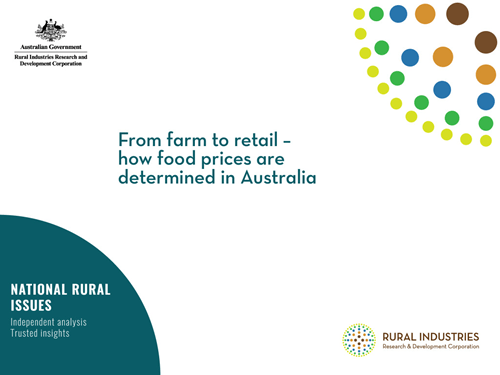The Australian food system is complex and dynamic – a matrix of sectors, products, markets, and value-chains that make up Australia’s agrifood industry. Further dimensions are added with the diversity of quality of produce, the extent to which foods are processed and the variety of end-uses within single product categories. Understanding the major determinants of food prices along value-chains is of critical importance to the future of policy-making by Governments and industry bodies.
The aim of the paper is to convey a better understanding of the main factors that determine prices (and costs) in value-chains for Australian agricultural food products, involving primary producers, manufacturers, wholesalers, and retailers. This study has been done as an update to a 2004 report into Food Price Determination for the (then) Australian Department of Agriculture published in 2004 by the same author. Much has happened in the intervening 11 years to change the landscape. Since that earlier report there have been significant changes to the influence of trade – import and export on most industry sectors – as well as the nature and intensity of competition in the domestic retail market.
The ongoing effects of price-based competition for retail market share continue to alter the food industry landscape, and will do so for some time. Alongside this, there have been many successful cases where food producers have captured higher unit value in meeting a more diverse set of consumer wants. The study takes a whole-of-chain perspective of each sector of the agri-food industry, considering the differing transformations of farm-gate commodities into food products, where value is captured and how participants perform over time.
The study looks into the quality of intelligence that is available to food producers on market conditions that affect their decisions; where major gaps exist and where improvements may be possible. The results are expected to be valuable for informing Australian agricultural and food policies and of interest to a broad range of stakeholders concerned about Australia’s food future.





